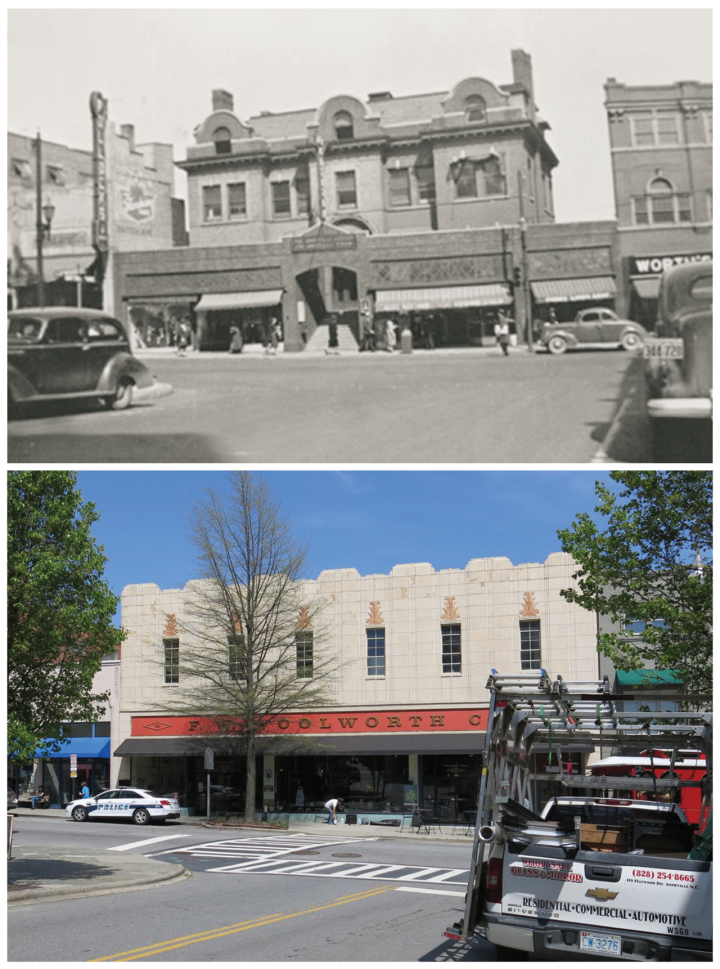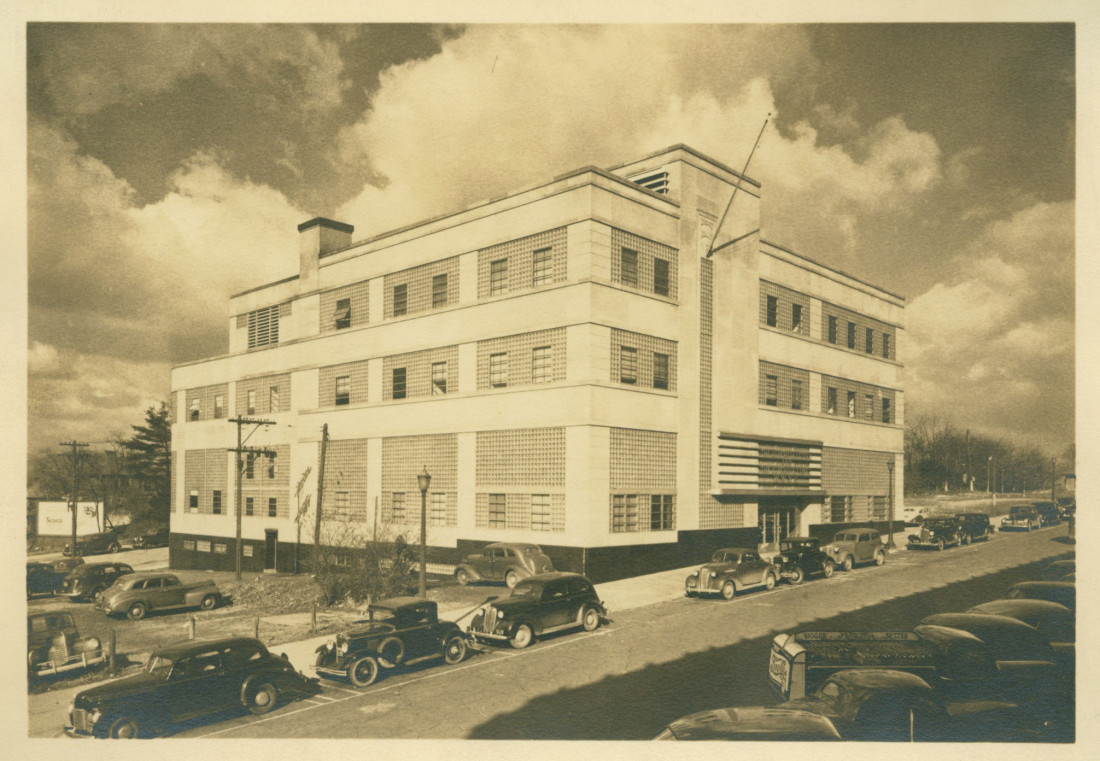On Nov. 13, 1937, The Asheville Citizen reported on a pair of construction projects set to take place over the following two years. The F.W. Woolworth Co. had plans to leave 38-40 Patton Avenue (present-day Asheville Savings parking lot) for Haywood Street, where the store would erect a new building. Meanwhile, The Asheville Citizen-Times Co. announced its own intentions of relocating to O. Henry Avenue; at the time it occupied the site where the future Woolworth’s would be built.
That day’s paper featured remarks from its president, Charles A. Webb, who declared that his organization “had long since outgrown its present quarters. A better designed and more commodious building is necessary.”
Construction on the newspaper’s new home began the following year. On May 3, 1938, The Asheville Citizen recapped the previous day’s “simple and dignified ground-breaking ceremony.” With a silvered shovel in hand, Webb dug out the site’s first mound of dirt. The paper estimated over 300 people attended the Monday morning event. This included past and present employees, as well as prominent community members, including the city’s mayor, Robert W. Wells.
At the ceremony, Webb called the new location “the realization of an ambition I have carried in my heart for the past 20 years.” The company’s president then went on to state:
“With this spade, I rededicate the Citizen-Times company to the upbuilding of North Carolina and particularly our Western North Carolina and Asheville — to that which means the development of the religious, the industrial, the business and agricultural life of our immediate communities.”
Anticipation over the new site stirred. On Dec. 25, 1938, the Asheville Citizen-Times called the building’s imminent completion one of the “[o]utstanding events of 1939.” The paper also stated that the facility would be “one of the best equipped plants of its kind in the entire South.”
Meanwhile, the razing of the newspapers’ former location began in the early days of the new year. On Jan. 3, 1939, The Asheville Citizen noted the start of demolition. By then, windows had already been removed and the roof torn off. All signs of its former days were gone, outside of an old press.

In the same article, the site’s history was chronicled. Completed in 1902, the building originally served as the location for the YMCA. The Citizen took over in 1921. The Times joined in 1930, as part of the merger between the two papers. The article continued:
“Before the universal use of radio in the home, baseball fans gathered on Haywood street to watch the World series on the ‘play-o-graphs,’ and great throngs would congregate on election night to get the latest returns as they were chalked up on a blackboard or flashed on a huge screen by a projection machine.”
Thousands gathered to tour the news organization’s new facility on Jan. 28, 1939. In the following day’s paper, the Asheville Citizen-Times estimated 3,000 total visitors. Additional tours were scheduled for the following day. According to the article, the building’s size, “ultra-modern” design and “ intricate equipment” left many guests in awe. One woman, the paper observed, “became so interested in watching one of the teletypes write out world news at the rate of 58 words a minute that she got lost from her party.”
Later that same year, on July 13, the new Woolworth opened on Haywood Street. Like The Asheville Citizen-Times’ building, it, too, was noted for its contemporary look. The Asheville Citizen declared it to be “one of the most modern retail selling establishments in the South.”
Several congratulatory ads were placed in that day’s paper, welcoming the establishment’s new location. Among them included the following message from contractor G.E. Crouch:
“We Dismantled The Old
Citizen & Times Building
For This Magnificent Store
That Now StandsCongratulations
F.W. Woolworth Co.”
Woolworth’s would close its downtown location in 1993. The Family Dollar operated out of the location for several years, before Woolworth Walk opened in 2002.
Earlier this month, the Citizen Times reported that David and Nathan Brown of O. Henry Investments LLC and Leverette Investments had purchased the newspaper building on O. Henry Avenue.
Editor’s note: Peculiarities of spelling and punctuation are preserved from the original documents.




Before you comment
The comments section is here to provide a platform for civil dialogue on the issues we face together as a local community. Xpress is committed to offering this platform for all voices, but when the tone of the discussion gets nasty or strays off topic, we believe many people choose not to participate. Xpress editors are determined to moderate comments to ensure a constructive interchange is maintained. All comments judged not to be in keeping with the spirit of civil discourse will be removed and repeat violators will be banned. See here for our terms of service. Thank you for being part of this effort to promote respectful discussion.